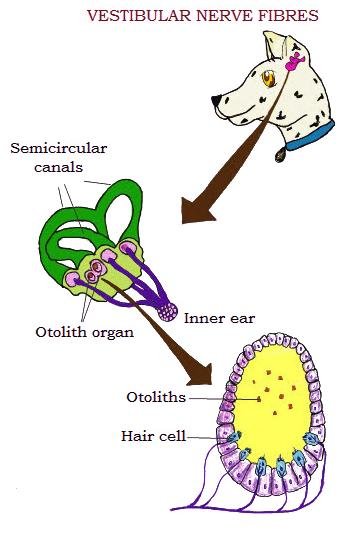Process of hearing
The pinna concentrates the sound waves to the auditory canal which conducts the sound waves to the ear drum.
The sound waves strike the ear drum causing it to vibrate. These vibrations are conducted by the ear ossicles to the inner ear through the oval window.
The vibrations cause the perilymph to vibrate causing waves of that fluid. These waves push on the basilar membrane of the cochlea causing it to vibrate.
The vibrations are transferred to the organ of Corti. Thereby the inner hair cells bend in response to the vibrations.
The bending of the stereocilia causes opening of the ion channels and depolarize.
The inner hair cells release glutamate as neurotransmitter, which excites the synapsing sensory neurons.
This action potential is propagated via the auditory nerve.
The neurons from each part of the basilar membrane synapse with neurons in particular area of the brain’s auditory cortex. Since the tension of the basilar membrane differs from the centre and the periphery of the membrane, which in turn differs in frequency of the vibrations, the specific areas of the auditory cortex respond to particular frequencies. This phenomenon is known as place coding.
The round window of the ear bulges outward in response to the increasing pressure in the inner ear thus avoiding backflow of the fluid and increasing the sound clarity.
The outer hair cells change in shape in response to the sound waves.
The outer hair cells depolarize just like the inner hair cells, but sends signal to voltage-sensitive motor protein unlike neurotransmitter release of the inner hair cells. This protein changes the shape of the outer hair cells.
Due to the change in shape, the outer hair cells pull the basilar membrane and ending in increasing tension which in turn results in increased basilar membrane movement.
Since basilar movement is related to the sound loudness, increased basilar membrane movement causes increase in the stimulus for the inner hair cells.

The ears can also detect the location of the sound by perception of the brain about the time lag and sound intensity. In mammals, outer ear also helps to localize the sounds. But this is not efficient, so the animals move their head to localize the direction of the sound.